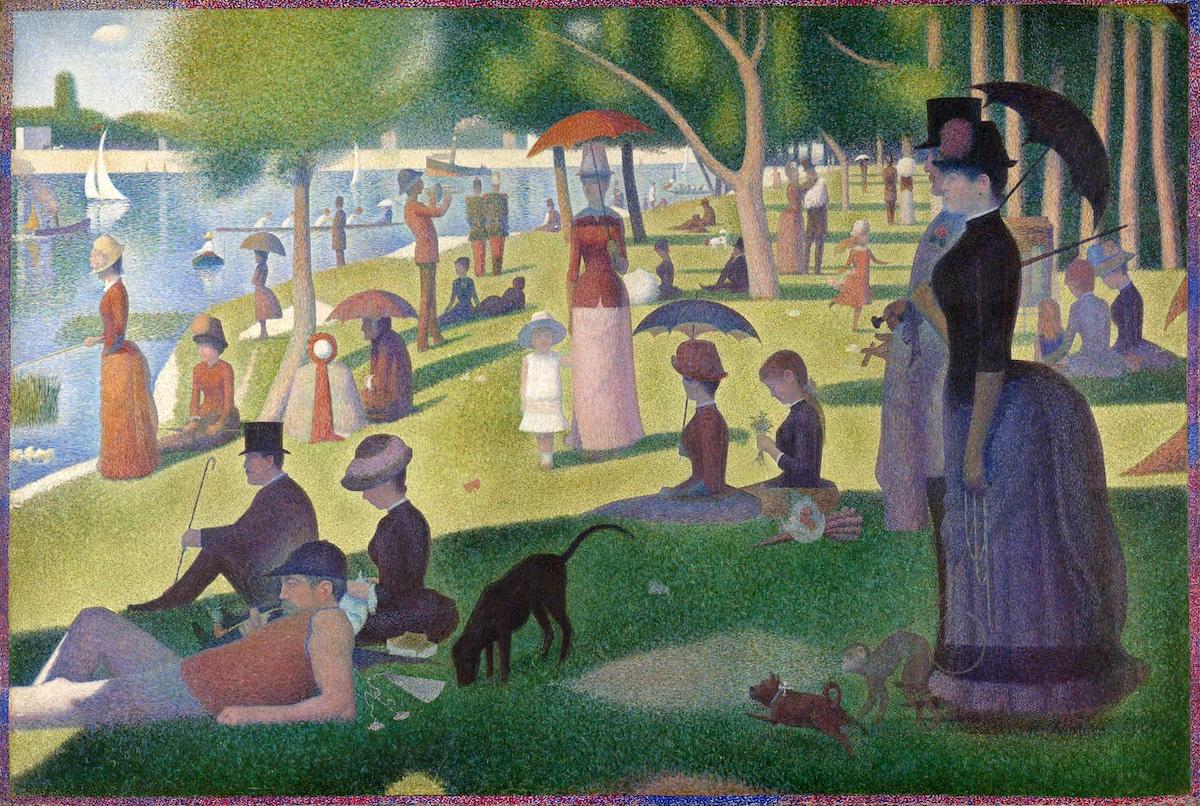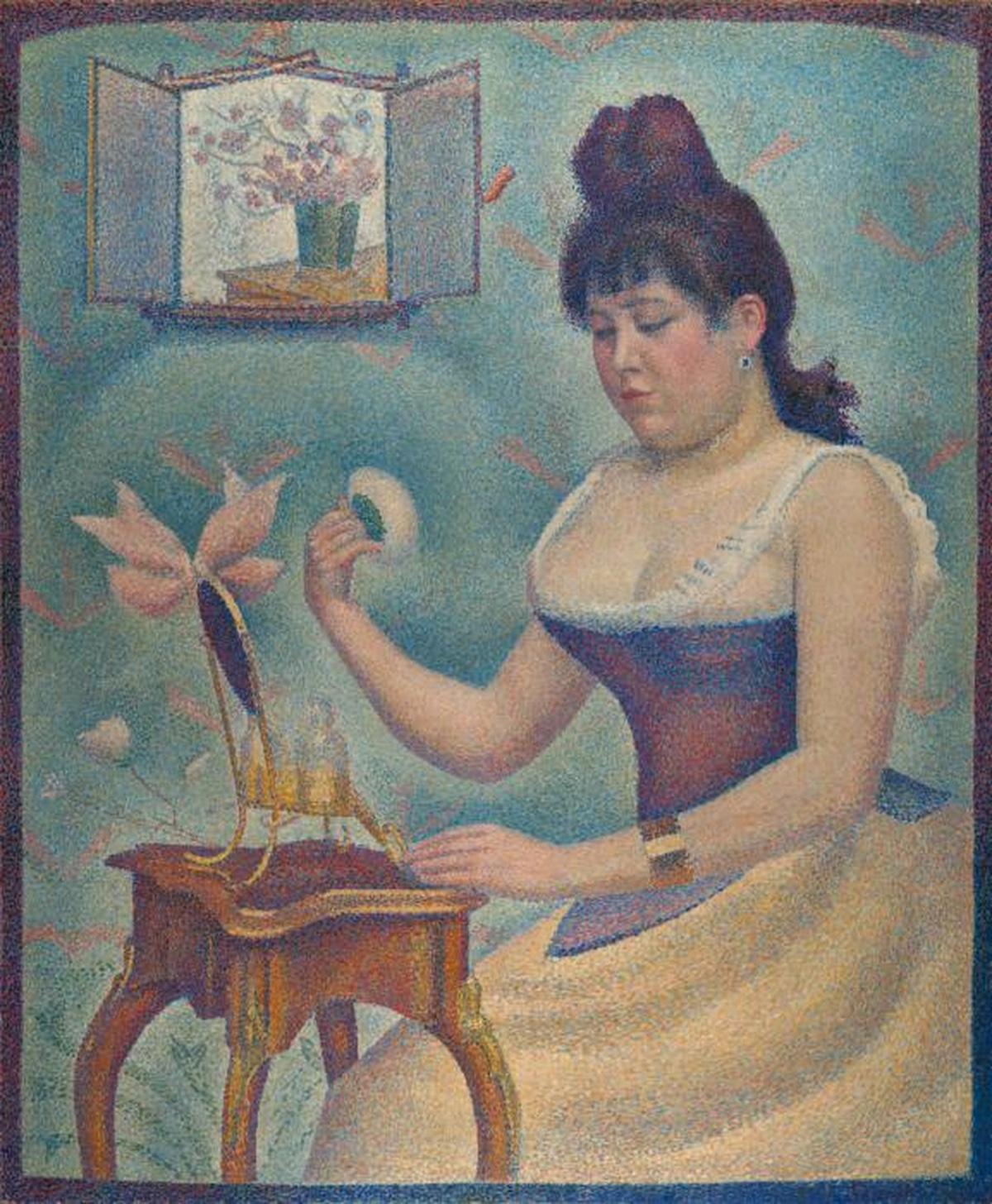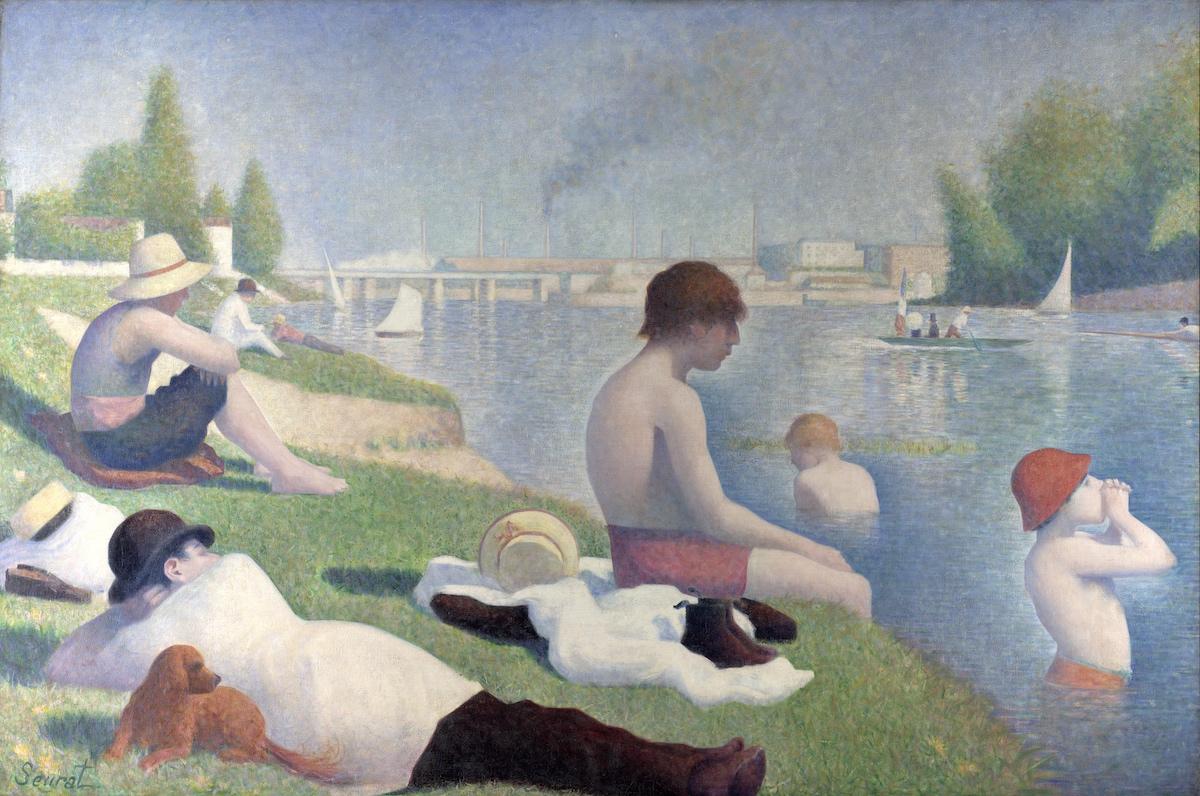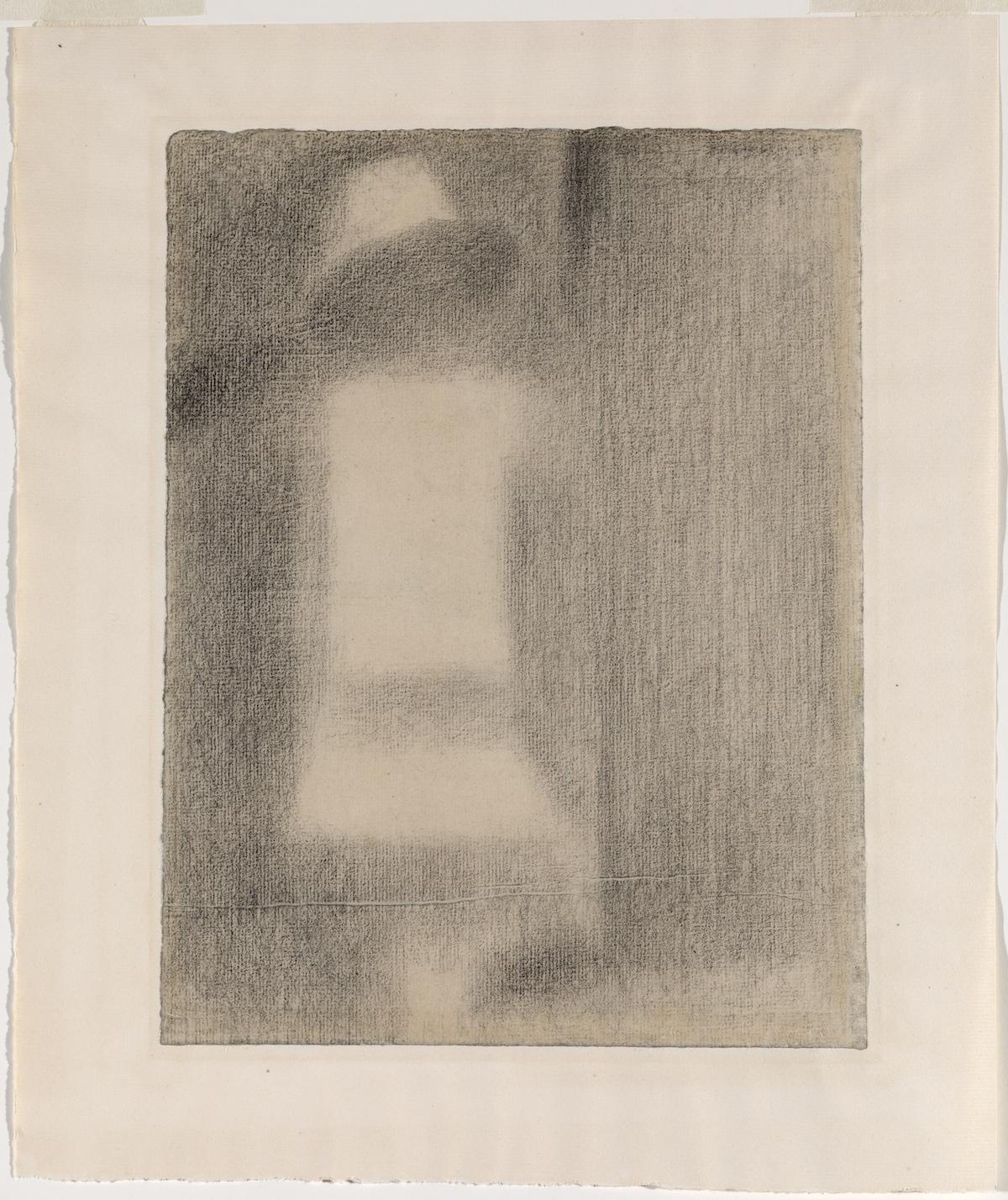Pointillism involves the careful application and juxtaposition of tiny dots or points of color. These mix at a distance, in the viewer’s eye, creating a wider spectrum of hues and luminosity, rather like how pixels in our screens create color and form now. Seurat preferred the term “divisionism,” but pointillism is the phrase that caught on.
While Impressionists such as Monet and Pisarro instinctively juxtaposed dots of color, Seurat was the first artist to use a systematic, scientific approach. Unlike the Impressionists, most of his work was done in his studio, rather than plein air.
































